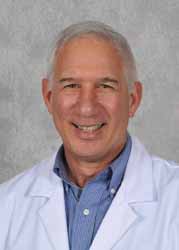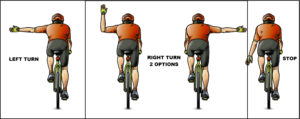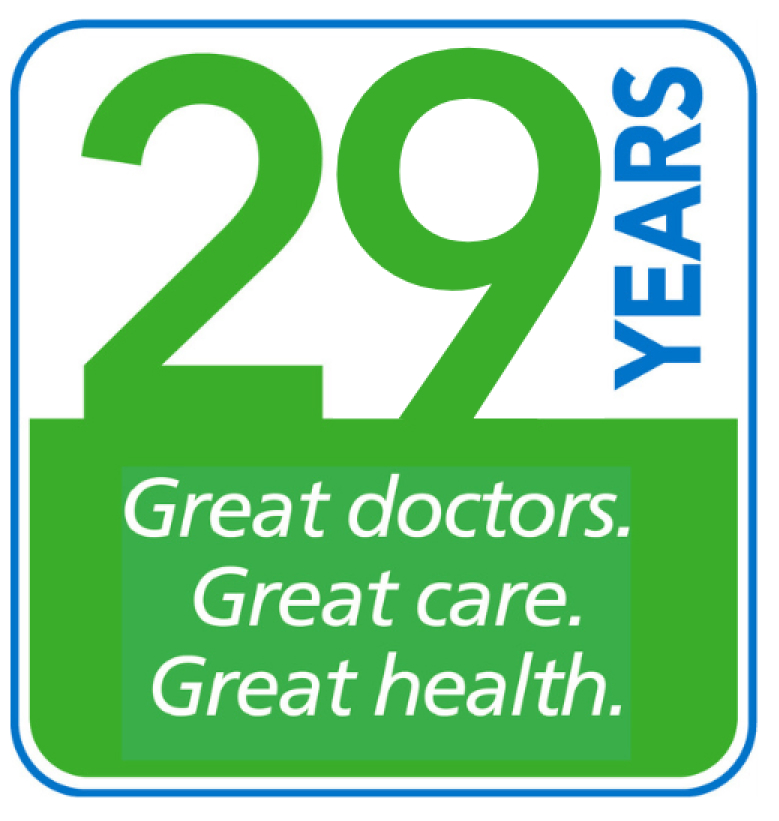Steps we are taking to care for our patients, staff and community.
Author Archives: Trudy
Bicycle Riding During COVID-19
By: Jamie Harms, M.D.
With families looking for safe outdoor activities during this time of COVID-19, many people are turning to bicycle riding to get some fresh air and exercise. Your chances of being exposed to the coronavirus while riding are low, but there are still some precautions you should take. And it wouldn’t hurt to brush up on good riding practices before you hit the road.
Coronavirus bicycle tips
- Face mask: You don’t have to wear a face mask in Maryland while bike riding, but it’s a good idea to have one handy for when you stop or are riding close to others. In hot weather, try an athletic mask made from fabric that wicks moisture. Make sure your mask fits well and covers both your mouth and nose.
- Social distancing: Try to keep at least 6 feet from other riders and pedestrians, especially at stops. If you’re on a busy bike trail, or if you’re drafting other riders, wear a mask. Pack drinks and snacks so you can avoid stopping at crowded stores.
- Shared bikes: If you plan to rent a bicycle, sanitize the handlebars and seat before and after you ride ─ and wash your hands.
Other bicycle safety tips
- Wear a helmet: Helmets are required for riders under 16. For everyone else, they’re your best safety gear. Wear one every time you ride.
- Obey traffic signs and signals: Bicycles must follow the rules of the road like other vehicles.
- Watch speed limits: Bikes are not permitted on roads with a speed limit of 50 MPH or faster.
- Keep an ear open: You may not wear headsets or earplugs in both ears.
- Don’t ride against traffic: Always go the same direction traffic is moving.
- Know where other vehicles are: Learn to look back over your shoulder, or use a rear-view mirror.
- Use hand signals: Hand signals tell motorists and pedestrians what you intend to do.
- Ride in the middle of the lane in slower traffic: Get in the middle of the lane at busy intersections and whenever you are moving at the same speed as traffic.
- Use lights at night: The law requires a white headlight and a rear reflector or taillight.
- Sidewalk riding: You can ride on sidewalks, but pedestrians have right of way.
Special rules for electric bikes
- Electric bike motors must automatically disengage at 20 MPH to keep you from going too fast.
- Any person operating an electric bike must wear a helmet.
- Electric bikes must follow the same traffic laws as cars and bicycles.
- You can ride them on roads and bike paths, but not on sidewalks.
- Electric bikes must yield to pedestrians and roadway traffic.
5 Tips to Stay Safe as Quarantine Ends
By: Victor M. Plavner, M.D.
With Maryland taking steps to reopen, you may be tempted to think the Covid-19 crisis is over. Not true ─ the coronavirus is still out there, with new cases being reported every day. To avoid a second wave of infections, you need to take precautions to prevent the spread of the virus. Here are five tips for how to re-enter public life safely.
- Remember the basics
We all learned safe habits during the quarantine. You should keep doing them when in public:
- Wear a mask
- Wash your hands and use hand sanitizer
- Avoid touching your face
- Practice social distancing: 6 feet apart
- Disinfect surfaces and equipment
- Limit contact with people who are at higher risk, such as the elderly and those with chronic illnesses. Remember, if you are infected, you can spread the virus before you show any symptoms.
- Avoid confined spaces
Try to stay out of places where air can be trapped or is unfiltered, such as elevators, break rooms and small shops. When possible, take advantage of any outdoor or open-air areas where people can meet while maintaining a healthy distance.
- Have a coming-home routine
Create a daily routine for arriving home to prevent bringing infectious germs into your home. Depending on your level of risk, this may include:
- Using hand sanitizer before entering your house
- Cleaning personal items with disinfectant before going in, such as keys, mobile phones, and things in your pockets
- Taking a shower
- Washing your work clothes
- Stay alert at gatherings
As we return to gathering socially, we should maintain a certain level of caution. This includes distancing or limiting interaction with people who don’t have the same level of concern about the virus. We have no way of knowing where someone has been, or their level of exposure to possible infection, so our best protection is to avoid getting close to people in restaurants, churches, stores, bars and other public places.
- Take care at work
If you work near others or have to attend meetings, try to keep some space between you and other people and wear a facemask. Try to keep surfaces in work and meeting areas sanitized.
The same applies to having lunch with a group of work friends. The wise thing is to skip this custom for a while. Eat lunch alone or carve out some personal space.
See this Wall Street Journal article for more tips to stay safe while you’re out and about.
 Dr. Plavner is a Maryland Primary Care Physicians, LLC partner, practices at the MPCP Arnold office . He earned his medical degree at the University of Louvain, Brussels, Belgium; and at George Washington University Medical Center.
Dr. Plavner is a Maryland Primary Care Physicians, LLC partner, practices at the MPCP Arnold office . He earned his medical degree at the University of Louvain, Brussels, Belgium; and at George Washington University Medical Center.
How MPCP is Keeping You Safe During Office Visits
At the peak of the coronavirus lockdown, MPCP was seeing close to 80% of patients by telemedicine. Now, as we have transitioned back to regular office visits, we are taking every precaution to make sure you stay healthy and safe during appointments. Here are some of the things we’re doing to protect patients while continuing to meet all of your primary care needs.
Phone evaluation: Safety starts before your visit. All patients calling for appointments are asked screening questions for Covid-19. Those who have symptoms are given telemedicine visits with providers to see if testing is needed.
Check-in: We make check-in safer by requiring all staff and patients to wear masks. After you check in, if it’s not yet time for your appointment, you may be asked to wait in your car to avoid possible exposure in the waiting room. We then call you in for your appointment.
Outdoor appointments for patients with symptoms: Patients are screened over the phone for respiratory/Covid-19 symptoms. At our Arnold office, for example, those with symptoms are scheduled for outdoor appointments at special, covered stations set up in the practice parking lot, with providers and staff wearing full PPE. If patients are suspected to have Covid-19, they are tested at the outdoor station and don’t enter the building.
Arrival screening: Patients arriving at our offices are checked for Covid-19 symptoms. At our Pasadena office, for example, patients enter through one set of doors where they are asked screening health questions and have their temperature taken. They are taken directly into exam rooms that are sanitized between each patient. They exit through separate doors.
Ongoing cleaning: For your safety, all of our offices’ waiting rooms are regularly sanitized, and exam rooms are disinfected between each patient.
Central Laboratory testing: Testing supplies are limited, so only patients meeting CDC guidelines for coronavirus infection are eligible for Covid-19 testing. For patients who are eligible to be tested and do not want to, or are unable to, be tested at their MPCP office, the test — a nasal swab – can be done in the parking lot of our Central Laboratory at our Arundel Mills office. However, all MPCP patients can get antibody testing, which requires a blood draw and shows whether you had a Covid-19 infection in the past. In both cases, results are available the next business day.
Our staff is working hard to make sure you receive the medical care you and your family need in a clean and safe environment. You can schedule an appointment at any of our offices knowing that you will receive quality care in the safest way possible. Please call your MPCP office seen if you have questions.




